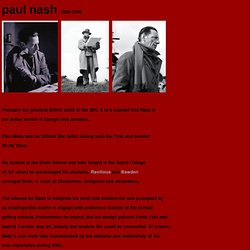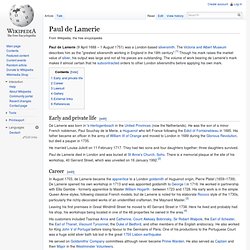

John Constable. 261 Works Displaying 1 to 10. Paul nash paintings. Birket foster paintings. Essential Vermeer. Stanley Spencer, English artist, by Kenneth Pople. Unravelling the Art of Stanley Spencer Analytic attention to process is the British genius.

Hugh Kenner, A Sinking Island. Stanley's creative impulse For most artists the creative impulse remains indefinable and the mental processes by which it becomes a picture mysterious. In the evolution of a painting the whirl of ideas surfacing from an artist's subconscious becomes integrated into an entity (defined here as a percept, concept, idea or emotion to which the thinker mentally imparts form) which is almost inexpressible in words, so much so that some artists - Bonnard or Klimt, for example - refused to divulge the inner life which prompted their art. The resulting entities, made visual as pictures, may appear to viewers intriguing, even inspirational, inviting a wish to share the artist's thinking behind his painting. But to love fully is to understand fully, 'understanding' in this sense having no need of explanation. Hokusai: 36 Views of Mount Fuji. Freer & Sackler Galleries. Welcome to Claude Monet's.
Paul Nash, Official War Artist. Paul Nash, (1889 – 1946) Biography Paul Nash was born in London and educated at St.

Paul’s School, later studying at the Slade School of Art where he met Mark Gertler, Dora Carrington, William Roberts amongst others. He was influenced by the artist/poet William Blake, and by the paintings of Samuel Palmer and Dante Rossetti. When World War I began, Paul enlisted in the Artists’ Rifles and went to the Western Front in 1917 as a second lieutenant in the Hampshire Regiment.
Just a few days before the Ypres offensive he managed to fall into a trench and broke a rib, and was sent to recuperate in London. During the Second World War, Paul Nash was employed by the Ministry of Information and the Air Ministry. Paul Nash. Paul nash 1889-1946 Probably the greatest British artist of the 20C.

It is a scandal that Nash is not better known in Europe and America. Paul Nash was an Official War Artist during both the First and Second World Wars. He studied at the Slade School and later taught at the Royal College of Art where he encouraged his students, Ravilious and Bawden amongst them, to work as illustrators, designers and decorators. The attempt by Nash to integrate his work into modern life was prompted by.
Vermeer Centrum Delft. Picasso: The Last Decades, AGNSW - smh.com.au. Paul de Lamerie. Paul de Lamerie (9 April 1688 – 1 August 1751) was a London-based silversmith.

The Victoria and Albert Museum describes him as the "greatest silversmith working in England in the 18th century".[1] Though his mark raises the market value of silver, his output was large and not all his pieces are outstanding. The volume of work bearing de Lamerie's mark makes it almost certain that he subcontracted orders to other London silversmiths before applying his own mark. Early and private life[edit] De Lamerie was born in 's-Hertogenbosch in the United Provinces (now the Netherlands).
He was the son of a minor French nobleman, Paul Souchay de la Merie, a Huguenot who left France following the Edict of Fontainebleau in 1685. He married Louisa Juliott on 11 February 1717. Paul de Lamerie died in London and was buried at St Anne's Church, Soho. Career[edit] In August 1703, de Lamerie became the apprentice to a London goldsmith of Huguenot origin, Pierre Platel (1659–1739). Lawsuit[edit] Gallery[edit] Arcimboldo Giuseppe. Nineteenth Century English Landscape. The Development of Landscape as a Revolutionary Genre This is a not-for-profit website created from my undergraduate notes to help other students.

Please report any inaccuracies to support@shafe.co.uk. 19th Century Landscape Synoptic Issues Idealisation versus naturalism Patterns Dissolution of genres and "isms" Multiplication of training and markets British Institute Free Exhibition 1871 Slade 1877 Grosvenor Gallery Gambert (important to PRB) Agnews Durand-Ruel Consciousness of "artifice" Technical experimentation and diversity (watercolour and oil) New oil painting techniques arose out of w/c techniques Palmer gum arabic technique Pre-Raphaelite wet-on-white Artifice - consciousness of artistic input, the paint surface (goes back to Turner and Constable) Emotional, spiritual aspects of painting arise from close study of realistic landscapes.
Patrons Coombes - Hunt, Millais Sheepshank - early - bought Wilkie, Mulready Result of French influence. Mason, The Harvest Moon, 1872. PRB Realism. Edgar Degas' Gallery OCAIW.